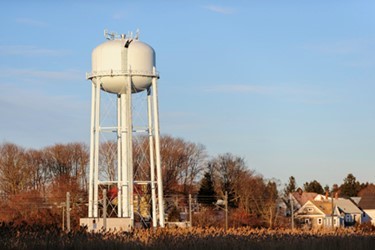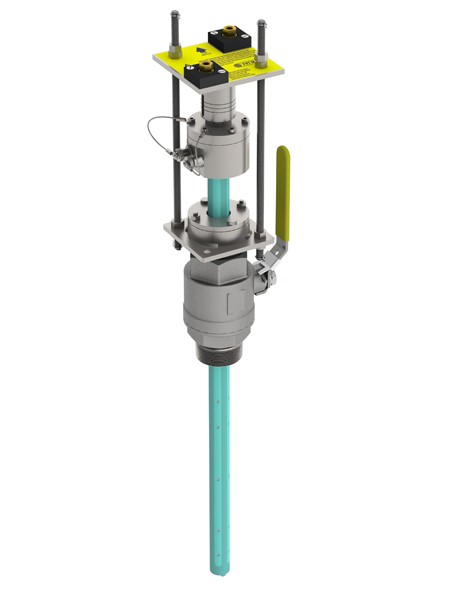- PRODUCTS
- INDUSTRIES
- RESOURCES
- SUPPORT
How Targeted Investments By Private Water Can Boost Public Support
 A significant number of utilities in smaller regions operating where resources are strained, and where the daily business of water treatment can be exceedingly expensive, have turned to privately owned companies to manage their drinking water and wastewater operations. For municipalities, this provides extensive expertise and economies of scale that they typically couldn’t get on their own.
A significant number of utilities in smaller regions operating where resources are strained, and where the daily business of water treatment can be exceedingly expensive, have turned to privately owned companies to manage their drinking water and wastewater operations. For municipalities, this provides extensive expertise and economies of scale that they typically couldn’t get on their own.
The downside is that this arrangement also tends to bring heavy scrutiny from a public that expects the provider to put service above the bottom line.
Through targeted investments in advanced flow meter technologies, these private management companies can limit service interruptions, reduce water loss, and become more efficient in their processes to keep costs down. The results will show they are serious about improved service and water quality, thereby boosting public support and stabilizing revenue for their municipal clients.
Pinpointing The Opportunities
Pumps, for example, are a major cost of drinking water treatment. They're used many places during the process: to get water into the plant, into the distribution system, or to another station. At the same time, the electric billing rate for utilities is typically based on the efficiency of those energy-intensive machines.
Testing by the power company is commonly performed with highly inaccurate devices, so utilities are charged a higher rate because their pumps are supposedly operating at low efficiency levels. Installing accurate flow meters in proximity to those pumps allows plant operators to prove greater efficiency levels and secure a lower energy rate. In cases where pumps aren’t performing well, the meters provide awareness of repairs or replacements that are necessary. Either way, the investment offers the potential for substantial cost savings.
Other instances where advanced flow metering can provide significant benefits include:
- Chlorine dosing. Excessive disinfectant not only impacts the quality of drinking water, it’s a waste. Avoiding just $40 a week in overdosing for disinfection adds up to more than $10,000 over five years.
- The operation of wastewater filtration beds or basins. There is a need to understand the volume going in and coming out of beds and basins to ensure effluent is being reused or recycled and not being dumped into the environment. Accurate measurements can be used to prove a system is adhering to regulatory requirements, which are only expected to become stricter over time.
- Water loss. Also known as non-revenue water, or NRW, water loss is difficult both to detect and to prove it doesn’t exist in the distribution system. This can happen even when plant operators have flow meters at both ends if their accuracies aren’t identical. Strategically placed flow meters at various points in the pipeline — devices that are all the same type, accuracy, and manufacturer for repeatability — will more than pay for themselves over the long term through the detection of leaks and illegal activity.
Officials at a water utility in Washington, for example, knew for several years they were producing a significantly higher volume of water than the revenue they were generating would indicate. A lengthy investigation finally revealed the disparity was a result of a farmer who hijacked a water line for irrigation. Advanced flow meters properly placed throughout the system would have detected the illegal activity much sooner.
Flow meters can also be helpful in pinpointing illegal discharges into the wastewater stream. This was the case when a California facility saw ammonia levels skyrocket when portable toilets were being dumped into a drain. Flow meters were used to identify where that influent was coming from, which helped law enforcement catch the culprits.
Even with legitimate activity, it’s still helpful for wastewater facility operators to understand the volume and source of influent in the effort to keep costs down.
The surge in microbreweries provides a good example. Craft beer producers cropping up in towns of every size are having an outsized impact on water usage. But not only do they consume vast amounts of drinking water, the brewers generate large amounts of wastewater laden with chemicals that have been used to clean and sanitize tanks and equipment. With the data provided by flow meters, the private management companies representing municipalities can require additional treatment or raise rates on those types of industrial customers.
Overcoming A Flawed Thought Process
Private water companies that haven’t implemented more flow meter solutions tend to have several misconceptions about the technology.
The first is that flow meters tend to rely on a single point of measurement, so they can’t have a large impact. McCrometer, however, is one of the few flow meter manufacturers whose instruments provide multiple points of measurement across the entire flow profile.
Another concern is that installations are cost-prohibitive and problematic. This happens because traditional full-bore mag meters require a line to be taken out of service, which can take upward of several days, depending on the size and scope of the project. Having to create a vault for the meter is an extra expense that can also be significant. Additionally, larger projects such as these have been known to require road closures and necessitate cutting down trees to access the site.
Installing flow meters can turn into a public relations debacle, as customers are not accustomed to long breaks in service. This is an especially sensitive topic for privately operated water systems, which are already under more scrutiny for their performance than municipal systems, so when anything goes wrong, it’s magnified.
McCrometer has a solution to all these issues — the Full Profile Insertion Mag Meter. Also known as the FPI Mag, this meter can be installed on a large line without shutting it down and at a major cost savings. Maintenance of the FPI Mag is also simple and unobtrusive.

Early generations of insertion mag meters gained a negative reputation because most only took a single point of measurement, making them highly inaccurate, and were prone to disturbances upstream and downstream from proximity to valves or pumps. An FPI Mag, by comparison, measures the entire profile of the pipe. This ensures consistent, high-accuracy readings and improved installation flexibility in customer applications.
Behind The Technology
The FPI Mag is available in battery- or solar-powered options for forward and reverse flows, enabling installation in remote applications without access to power. It can also be applied to other never-before-metered sites because it doesn’t require construction of a large chamber or lots of infrastructure.
Through a variety of outputs, the FPI Mag offers flexibility to operators. This includes a Smart Output option to connect to AMI/AMR systems through an encoded digital output as well as a standard 4–20 mA output option to connect to a SCADA system or GSM/GPRS datalogger.
The FPI Mag is a single-piece design with no moving parts. The multi-electrode flow sensor contains nothing to wear or break and is generally immune to clogging by sand, grit, or other debris.
Other key FPI Mag specifications include:
- Available with bidirectional or forward-flow-only measurement options;
- Can fit line sizes from 4” to 138”;
- Robust construction — The sensor body is made from heavy-duty 316 stainless steel for maximum structural integrity and is hermetically sealed and protected by an NSF-certified 3M fusion-bonded epoxy coating (the meter itself is fully NSF-61 and NSF-372 certified); and
- Meets or exceeds industry standards of 0.5 percent accuracy with third-party testing verification.
Case Study
Seattle Public Utilities’ Cedar Water Treatment Facility, located southeast of Seattle, provides 70 percent of the Seattle metropolitan area’s drinking water and can treat up to 180 MGD. Accurate flow measurement is essential to the safe, efficient operation of the facility, so flow meters are installed on the raw water intake system that pumps water from the lake, in the various water treatment areas, and at the point of distribution to the municipal water system.
Several years ago, plant managers decided to install the FPI Mag flow meters as the primary meters to measure treated water for compliance purposes and to determine chemical and power efficiencies. The combined flow measured by the 13 FPI Mag meters on the UV disinfection lines is now used to calculate total treated plant flow each day.
While there are flow meters in other locations across the facility that were intended to measure total plant flow, plant managers say their experience has shown the FPI Mag meters provide the most accurate and reliable measurements.
A variety of water systems across the globe have adopted the FPI Mag with success, including the City of Geneva, OH; Pernambuco, Brazil; Lagos, Nigeria; and the City of Detroit, MI. The FPI Mag has also been successfully installed as part of numerous industrial applications such as cooling towers at a large oil and gas refinery in the southern U.S. and an island power plant.
McCrometer’s FPI Mag is emerging as a cost-effective solution for water utilities and industrial operations seeking to improve system management by getting a better grasp of their flow measurement. The key to evaluating the FPI Mag compared to other electromagnetic flow meter technology is accounting for the total ownership costs as well as factoring in accuracy improvements and additional benefits.

